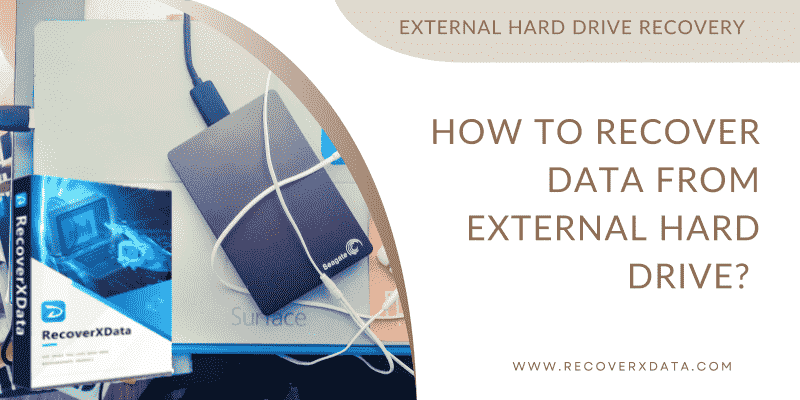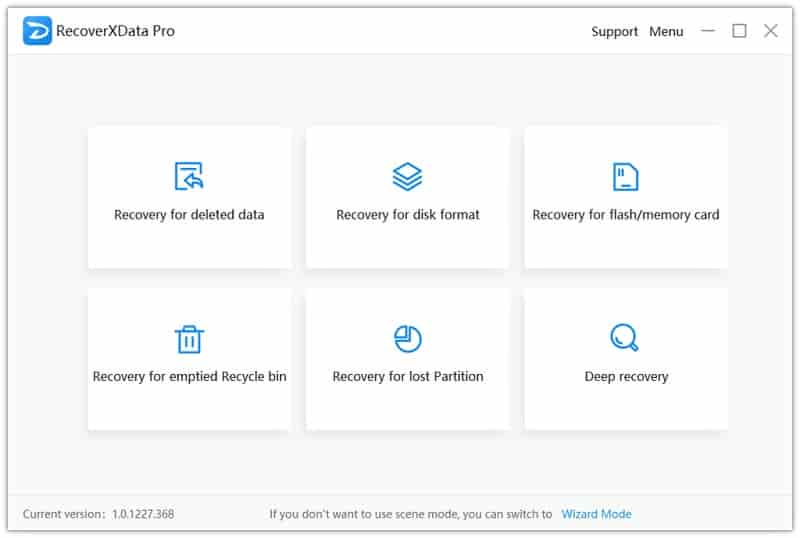How to Recover Data from External Hard Drive? (External Hard Drive Recovery)
Have you ever experienced that heart-stopping moment when you realize that crucial files from your external hard drive are missing? Whether it’s due to accidental deletion, a virus attack, or the drive just failing out of the blue, losing data can be a real headache. But don’t panic! RecoverXData is here to save the day. In this guide, we’ll walk you through everything you need to know about recovering data from an external hard drive using RecoverXData, the best external hard drive recovery tool. Ready to bring those lost files back to life? Let’s dive in!

Understanding External Hard Drive Data Loss
When your external hard drive suddenly loses data, it can feel like the end of the world, especially if those files are irreplaceable. But understanding why data loss happens can give you a better chance at successful recovery.
Common Causes of Data Loss
Data loss can strike for several reasons. Maybe you accidentally deleted a folder while clearing up space, or perhaps a power surge during a transfer left your files corrupted. Other common causes include:
- Physical Damage: Dropping or mishandling the drive can lead to mechanical failures.
- Virus or Malware Attacks: Nasty viruses can corrupt or even delete your files.
- File System Errors: Sometimes, the file system gets corrupted, making your data inaccessible.
- Improper Ejection: Removing the drive without safely ejecting it can lead to data corruption.
Signs That Your External Hard Drive Needs Recovery
Is your external hard drive acting up? Before you assume your files are gone forever, watch for these telltale signs:
- Strange Noises: Clicking or grinding sounds might indicate physical damage.
- Drive Not Recognized: If your computer doesn’t recognize the drive, there could be a serious issue.
- Slow Performance: If accessing files takes forever, it might be a sign of impending failure.
- Corrupt Files: If files won’t open or are missing, it’s time to consider recovery options.
Why Choose RecoverXData for External Hard Drive Recovery?
With so many data recovery tools out there, why should you pick RecoverXData? Simply put, it’s a powerful, user-friendly solution that’s designed to get your files back with minimal hassle.
Key Features of RecoverXData
RecoverXData comes packed with features that make data recovery a breeze, even for beginners. Here’s what makes it stand out:
- Easy-to-Use Interface: No tech skills required. The simple layout guides you through the process step by step.
- Multiple Recovery Modes: Whether you’re dealing with accidental deletion, formatting, or corruption, RecoverXData has a mode for you.
- Preview Before Recovery: Not sure which files to recover? You can preview them first to make the right choice.
- Support for Various File Types: RecoverXData can retrieve documents, photos, videos, and more from your external hard drive.
Advantages Over Other Data Recovery Tools
What sets RecoverXData apart from the competition? Here are a few reasons why it’s the go-to tool for many users:
- Speed and Efficiency: RecoverXData scans and recovers files faster than many other tools.
- Affordability: It offers great value without compromising on quality.
- High Success Rate: Thanks to its advanced algorithms, RecoverXData has a high success rate in recovering lost files.
Step-by-Step Guide to Recover Data from External Hard Drive with RecoverXData (External Hard Drive Recovery)
Now that you know why RecoverXData is the best choice, let’s get into the nitty-gritty of how to use it. Follow these simple steps to recover your lost data.
Step 1: Download and Install RecoverXData
First things first, you need to get the software. Head over to the RecoverXData website and download the installer. It’s quick and easy!
System Requirements for RecoverXData
Before you install, make sure your system meets these minimum requirements:
- Operating System: Windows 7/8/10/11
- RAM: At least 2 GB
- Disk Space: Minimum 150 MB
- Processor: 1 GHz or faster
Step 2: Connect Your External Hard Drive
Plug your external hard drive into your computer using a compatible USB cable. Make sure it’s securely connected and that your computer recognizes the drive.
Step 3: Select the Recovery Mode
Once your drive is connected, launch RecoverXData. You’ll see several recovery modes—choose the one that best suits your situation. If you’re unsure, start with “Recovery for deleted data” or “Deep recovery”(this mode takes a longer time to scan for more data).

Step 4: Scan for Lost Files
Choose the right external hard drive and click the “Scan” button to begin searching for lost files on your external hard drive.

RecoverXData offers two types of scans: Quick Scan and Deep Scan.
Quick Scan vs. Deep Scan
- Quick Scan: A fast way to find recently deleted files. It’s great if you’ve just lost the data and haven’t added new files to the drive. After a quick scan, you can choose to scan deep if you haven’t found the data you need.
- Deep Scan: A more thorough scan that takes longer but digs deep into the drive’s data structure. Use this if the Quick Scan doesn’t find your files.
Step 5: Preview and Recover Your Files
Once the scan is complete, you’ll see a list of recoverable files. You can preview them to make sure you’re recovering the right ones. Select the files you want and click “Recover.”

Step 6: Save Recovered Files to a Safe Location
It’s important to save the recovered files somewhere safe—ideally, not on the same external hard drive you’re recovering from. Choose a different drive or your computer’s internal storage.

Tips to Prevent Future Data Loss on External Hard Drives
Recovering lost data is great, but preventing data loss in the first place is even better. Here are some tips to keep your files safe in the future.
Regular Backups
Make it a habit to back up your data regularly. Whether you use cloud storage, another external drive, or a network-attached storage (NAS) device, having a backup can save you a lot of stress.
Safe Removal of External Hard Drives
Always safely eject your external hard drive before unplugging it from your computer. This simple step can prevent file corruption and data loss.
Use Reliable Antivirus Software
Viruses and malware can wreak havoc on your external hard drive. Keep your system protected with reliable antivirus software, and run regular scans to catch any threats early.
Conclusion
Losing data from your external hard drive can be a stressful experience, but with the right tools, it doesn’t have to be a disaster. RecoverXData is a powerful, user-friendly solution that can help you recover your lost files with ease. By following the steps outlined in this guide, you can give yourself the best chance of getting your data back. And remember—prevention is key! Regular backups and safe handling of your external hard drive can help you avoid data loss in the future. If you have more questions about external hard drive recovery, please check the FAQs or contact us.
FAQs
Q1: Can I recover files from a physically damaged external hard drive with RecoverXData?
A: RecoverXData is primarily designed for software-based recovery. If your drive is physically damaged, you may need to seek professional data recovery services.
Q2: How long does the recovery process take?
A: The time it takes depends on the size of your external hard drive and the type of scan you choose. A Quick Scan is usually fast, while a Deep Scan may take several hours.
Q3: Is RecoverXData compatible with Mac?
A: Currently, RecoverXData is only available for Windows. Mac users will need to look for alternative recovery software.
Q4: Can I recover specific file types with RecoverXData?
A: Yes, you can filter the scan results to recover specific file types like documents, photos, videos, and more.
Q5: What should I do if RecoverXData doesn’t find my files?
If RecoverXData doesn’t find your files, try the following steps:
- Double-Check the Drive: Ensure you have selected the correct drive or partition where the files were lost. Sometimes, the files might be on a different partition than expected.
- Use Deep Scan Mode: If you initially used a quick scan, switch to the Deep Scan mode. Deep Scan thoroughly searches the storage device, taking more time but increasing the chances of finding lost files.
- Check File Filters: Make sure that the file type filters are correctly set. If you’re looking for specific file types (like photos or documents), ensure that these filters are enabled.
- Try a Different Recovery Mode: RecoverXData offers various recovery modes, such as Deleted File Recovery, Formatted Drive Recovery, and more. Experiment with different modes to increase the likelihood of file retrieval.
- Contact Support: If none of the above steps work, contact RecoverXData’s customer support for further assistance. They might provide additional tips or updates that could resolve the issue.
- File Damaged Severely: If the data is severely damaged, it might not be recoverable, even with the best recovery tools. In such cases, you may want to take the external hard drive to a local repair shop to see if they can recover the data at the hardware level.
The earlier the data is scanned, the more data will be recovered.
Recover Now


